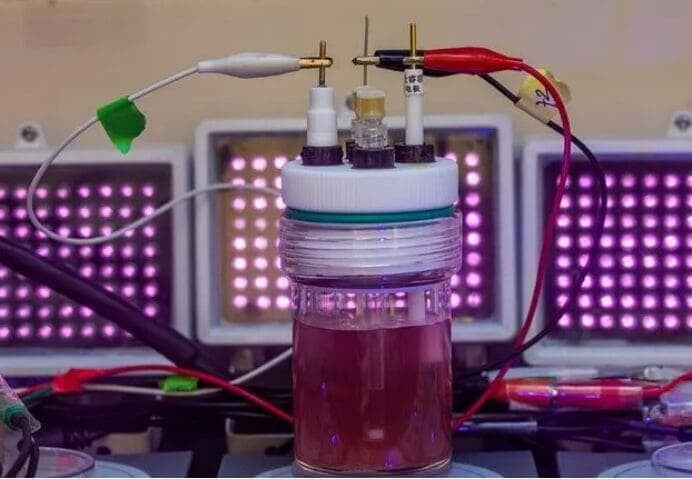In a world awash with petroleum-based plastics, scientists are looking for alternatives that are more sustainable, more biodegradable and less toxic to the environment. Two new studies by biologists at Washington University (WashU) in St. Louis, USA, have found a purple bacteria that, with a little encouragement (electricity + nitrogen), can work like a microfactory for bioplastics.
One research team, led by Eric Conners, a graduate student at the university, two relatively unknown purple bacteria were able to produce polyhydroxyalkanoates (PHAs), a natural polymer that can be purified to make plastics. Another team, led by research lab supervisor Tahina Ranaivoarisoa, genetically engineered a well-studied purple bacterium that could be induced to drastically increase production of PHAs, but the bacterium is notoriously recalcitrant.

They both work in the lab of Arpita Bose, associate professor of art and science biology at WashU, who is the corresponding author of the new study. There is a huge global demand for bioplastics, which can be produced without releasing carbon dioxide into the atmosphere and are fully biodegradable, Bose said. The two studies demonstrate the importance of taking multiple approaches. Purple bacteria are specialized aquatic microorganisms known for their adaptability and ability to produce useful compounds from simple ingredients. Like green plants and some other bacteria, they can use solar energy to convert carbon dioxide into food. But instead of using chlorophyll, they use other pigments to capture sunlight.
Such bacteria naturally produce PHAs and other bioplastic monomers to store additional carbon. Under the right conditions, they can produce these polymers indefinitely. As the WashU authors describe in their paper in the journal Microbial Biotechnology, two little-known purple bacteria in the genus Rhodobacteria have shown a remarkable ability to produce polymers when powered by a small amount of electricity and nourished with nitrogen. Conners said, “There's a need to look at bacteria that haven't been studied before. We haven't realized their potential.” Red microbial bacteria (Rhodomicrobium bacteria) have unusual properties that make them interesting contenders for natural bioplastic factories. “It's a unique bacterium that looks very different from other purple bacteria,” Conners said. When some species float around a culture as individual cells, this particular genus forms interconnected networks that seem particularly well suited to produce PHA. other types of bacteria can also produce bioplastic polymers with some help. As reported in the journal Applied and Environmental Microbiology, WashU researchers used genetic engineering to induce impressive levels of PHA from Pseudomonas aeruginosa TIE-1, a well-studied species of Pseudomonas aeruginosa that is often reluctant to produce polymers.
Ranaivoarisoa says, “TIE-1 is a good subject for study, but historically it has not been the best organism for PHA production.” Some genetic tweaks have helped increase PHA production, but one approach has been particularly successful.
The researchers saw impressive results when they inserted a gene that increases the natural enzyme RuBisCO, a catalyst that helps plants and bacteria capture carbon from air and water. With the help of this energizing enzyme, the normally slow-moving bacteria turned into relatively powerful PHAs. The researchers are optimistic that similar methods may be applicable to other bacteria that may produce higher levels of bioplastics. In the near future, Bose plans to further study the quality and possible uses of the polymers produced in her lab.” We hope that these bioplastics will produce real solutions in the future.”

